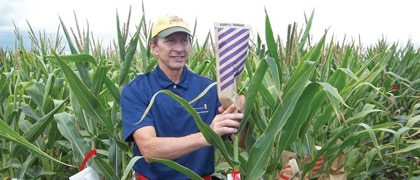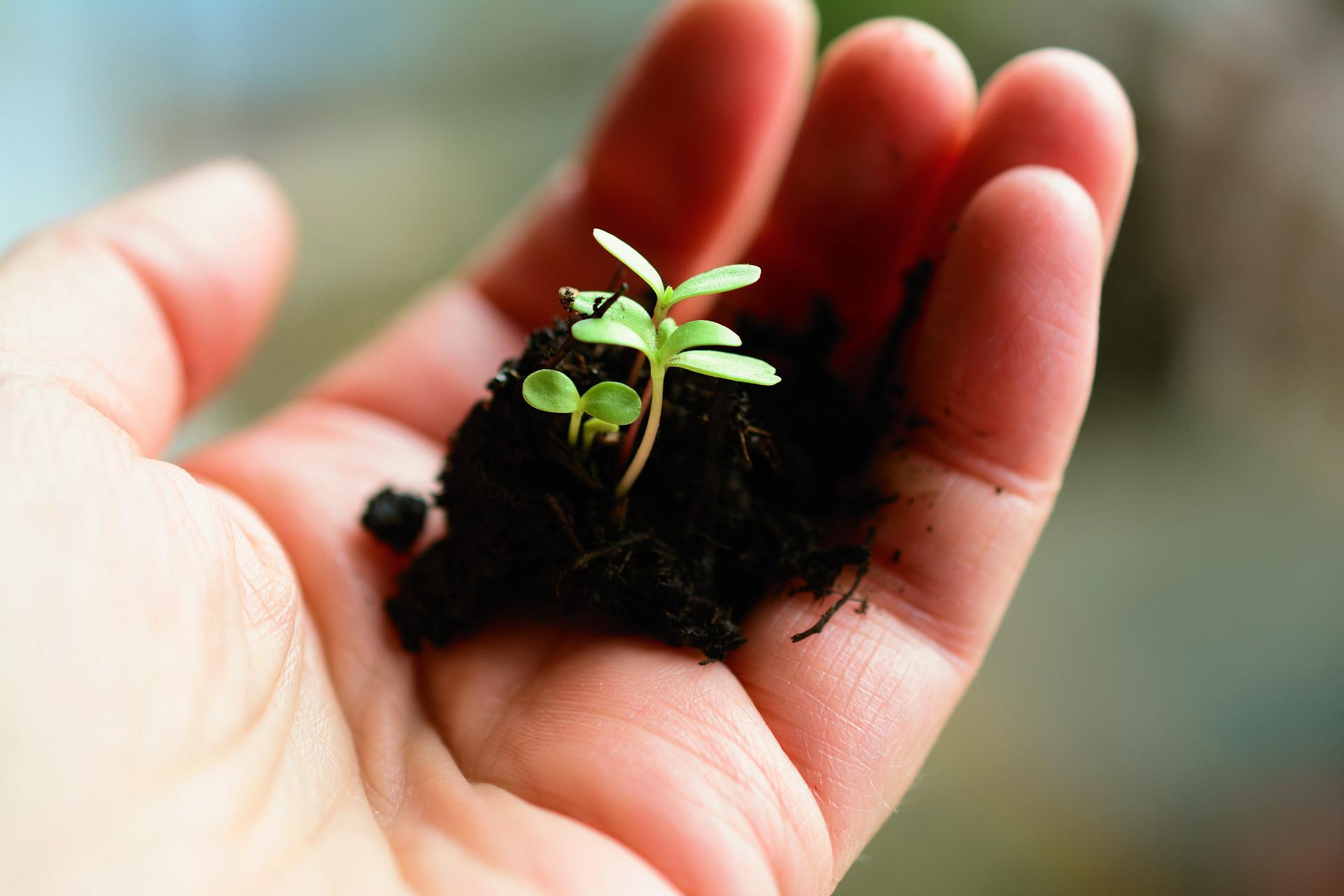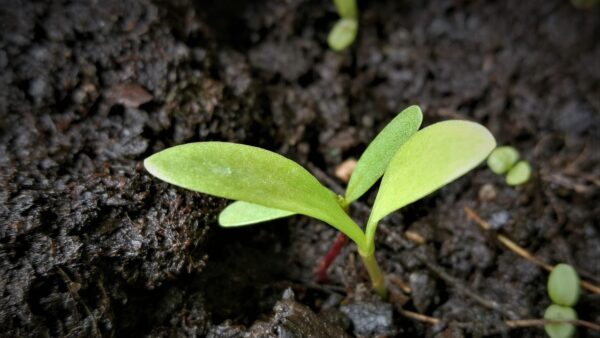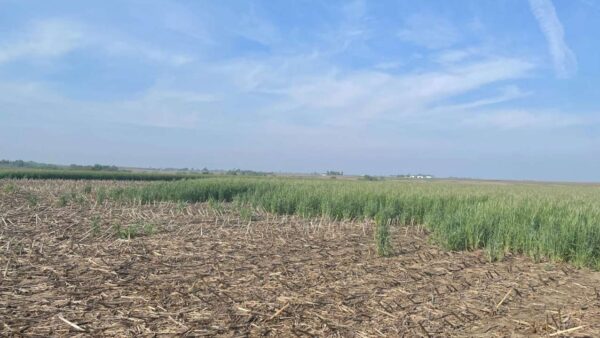A Promising Future
Plant breeding’s potential in the United States is immense—as long as the public research sector is sufficiently funded.
The importance of strong plant breeding programs in the United States cannot be underestimated, say the top minds in the field. The productivity of the nation’s agricultural system is determined “half by plant breeding and the other half by practices,” says David Stelly, a professor in the department of soil and crop sciences at Texas A&M University and the past president of the National Association of Plant Breeders. “You cannot afford not to have good breeding to bring along the genetic capabilities of your agricultural system,” he says.
Stelly and fellow plant breeder Allen Van Deynze, a researcher at the University of California, Davis’ Seed Biotechnology Center and past president of the Plant Breeding Coordinating Committee, are anxious to see a resurgence of public support for plant breeding. However, despite the challenges of the past decade or two, both researchers are optimistic about the future of plant breeding in the United States.
Public funding of plant breeding is an area of concern for those in the industry.
“The future is bright,” says Van Deynze. “The potential is huge, but the public [research sector] needs to be funded to make sure that potential is realized.” Stelly agrees that the future is promising, but contingent on sufficient resources. “One has to understand there has been a significant loss in the public plant breeding sector. Some of that has been made up and even expanded in subareas in the commercial sector. That being said, we’re in a situation where we have a compromised ability to do what needs to be done on the public end of breeding,” says Stelly.
The type of funding also needs to be addressed, says Van Deynze, to support plant breeding cycles. “A lot of public funding has gone to three- or four-year grants—that’s not a plant breeding cycle or program … it’s just an individual project. Plant breeding really needs long-term funding. We need grants that are five-year renewable or 10 years so a plant breeding program [can] live. You can’t start and stop a plant breeding program,” he says. The creation of partnerships and support from both private and public funds could see a plant breeding program through the highs and lows as well as offset the expense of field and laboratory equipment, adds Van Deynze.
Operating a mainstream breeding program, including expenditures such as technicians, graduate students, principle investigators, research facilities, equipment and consumables, can cost between $500,000 and $700,000 annually, says Stelly. The model he likes to put forward is based on running a medical clinic where there is enough money to operate as well as funds for extras if needed.
“The model that needs to be the mainstay is one where there is enough base funding to run a project over time without interruption. That isn’t to say there isn’t review, critique and the mandatory pressure to make them as cost-efficient and effective as possible,” says Stelly. Competitive grants could then be used to support areas that need focus and emphasis. “If somebody’s doing a good job on an important project, then they’re going to get another round of funding,” he says.
New Technologies
Much of the enthusiasm about the future is a result of the application of new technologies to plant breeding, and the ability to employ them on crops beyond corn and soybeans. “We’re almost at a turning point … where we can actually apply the technologies to any crop we like,” says Van Deynze. Plant breeders are now leveraging genome sequencing and realizing technologies such as genomic selection and the use of DNA markers.
However, genetics, statistics, breeding methodologies and techniques remain the foundation of breeding. The technologies now available to breeders allow them to “accelerate the process and to make decisions with more information and more precise selections,” says Van Deynze.
Although molecular technologies such as genomics, proteomics and metabolomics remain key to breeding advancements, the wave of the future—and an area generating excitement among breeders—is high-throughput phenotyping of plants.
According to Van Deynze, this cutting-edge technology allows researchers to examine plants in more concrete and objective ways. For example, with the use of scanners and light waves, factors such as water content and nitrogen use can be determined in addition to detailed images of the plant’s structure. “This allows us to get more objective trait assessments on large populations—that’s the key. The large populations corn breeders use are now going to be accessible to other crops. We’ll be able to extract the genetic potential of the different populations,” says Van Deynze.
The technology holds promise for crops where it has been difficult to assess the genetic possibilities of large populations in the past, such as vegetables. The capabilities associated with data analysis are also advancing by leaps and bounds. “We’re also getting smarter in applying statistics and new models in the field to extract more objective numbers on the traits by being able to control spatial variations and even adjusting to local climate and weather—it’s quite exciting,” says Van Deynze.
The mobility of these technologies is also likely to evolve, says Stelly. “We’re going to see more equipment that’s mounted and mobile, that goes out into the field and we can run through plots and gather large amounts of data,” he says, raising the importance of the increased use and power of computational processes including the use of automated data processing.
Technology is allowing breeders to be more effective by providing more useful data, says Stelly. “You can interdigitate the phenotyping electronic equipment you drag through a field with GPS units—they can do this to one inch or better—so you get incredibly good data from those settings. All of these technologies are getting faster, more reduced in size and enabling us to do these things in more remote systems, more automated systems, more intelligent systems and more integrated systems. We’re at the tip of the iceberg and it’s just going to accelerate. So we’re going to see lots of opportunities,” he says.
Challenges Ahead
However, breeders are currently collecting data faster than it can be analyzed—at a rate that far outstrips a computer’s processing power. Converting that data into knowledge is another challenge, says Van Deynze. “There’s no way breeders can do this alone. Even in the public [sector], breeding is a team sport; it has to be now. Very few varieties come from a single person anymore, even in the public [sector],” he says.
Staying on top of these cutting-edge technologies while educating students on their application in laboratories and in the field so graduates are “market ready” also present challenges, says Stelly, because like everywhere else “money’s always an issue,” he says. “To make this work we need to be in the field dovetailing these technologies with the field programs, and that has been difficult to do because of the reduced resources. … You really can’t educate a high-quality breeder without having them do breeding and research as part of that process,” he says.
Competition for funds comes from various sectors, with the medical industry at the top of the list of contenders for public spending. “We’ve lost a lot of ground to the medical industries. If you put it before the public, it’s much easier to sell the idea of investing in medical rather than agricultural research,” says Stelly.
However, agriculture may figure more prominently in the minds of the public once they realize what is really at stake: that agriculture affects much more than just food production, such as the environment and health. “Water is something people can relate to pretty quickly and issues with fertilizer pollution is another one,” says Stelly. “Medicine affects people at certain times in their lives, but everybody needs food every day.”
Van Deynze would also like to see a more equal distribution of funds. “I’d love to see someday where we’re investing as much in agriculture as we are in medicine. You would think the two have to work together.”
Potential in Partnerships
The complementary alliance between the NAPB and the PBCC has been advantageous for both organizations. Last August, both groups were invited to attend the latest listening session of the USDA’s Plant Breeding Working Group at which Van Deynze had the opportunity to address participants about priorities and funding models. “We now have much closer interaction with the USDA to try to formulate the next round of funding,” he says.
The NAPB and PBCC strive to communicate the importance and enhance the educational aspects of plant breeding. However, addressing breeding issues in partnership with organizations that share interests with them may produce more efficient and effective results. “We’ve had some interactions with EUCARPIA, which is a plant breeding group in Europe, because many of the issues are not unique to us and some are very global in nature,” says Stelly. “We feel it’s important to do these things in order to rekindle the strength that plant breeding should have and needs to have for us to sustain ourselves in the future.”
In the future, producing agricultural products in an efficient and sustainable manner will be one of the top challenges the plant breeding sector will have to address. “It’s not just about having enough, but to produce it efficiently, where we’re not destroying our environment and we’re not compromising our health, but we’re making money and producing things the country needs,” says Stelly.
Kari Belanger













